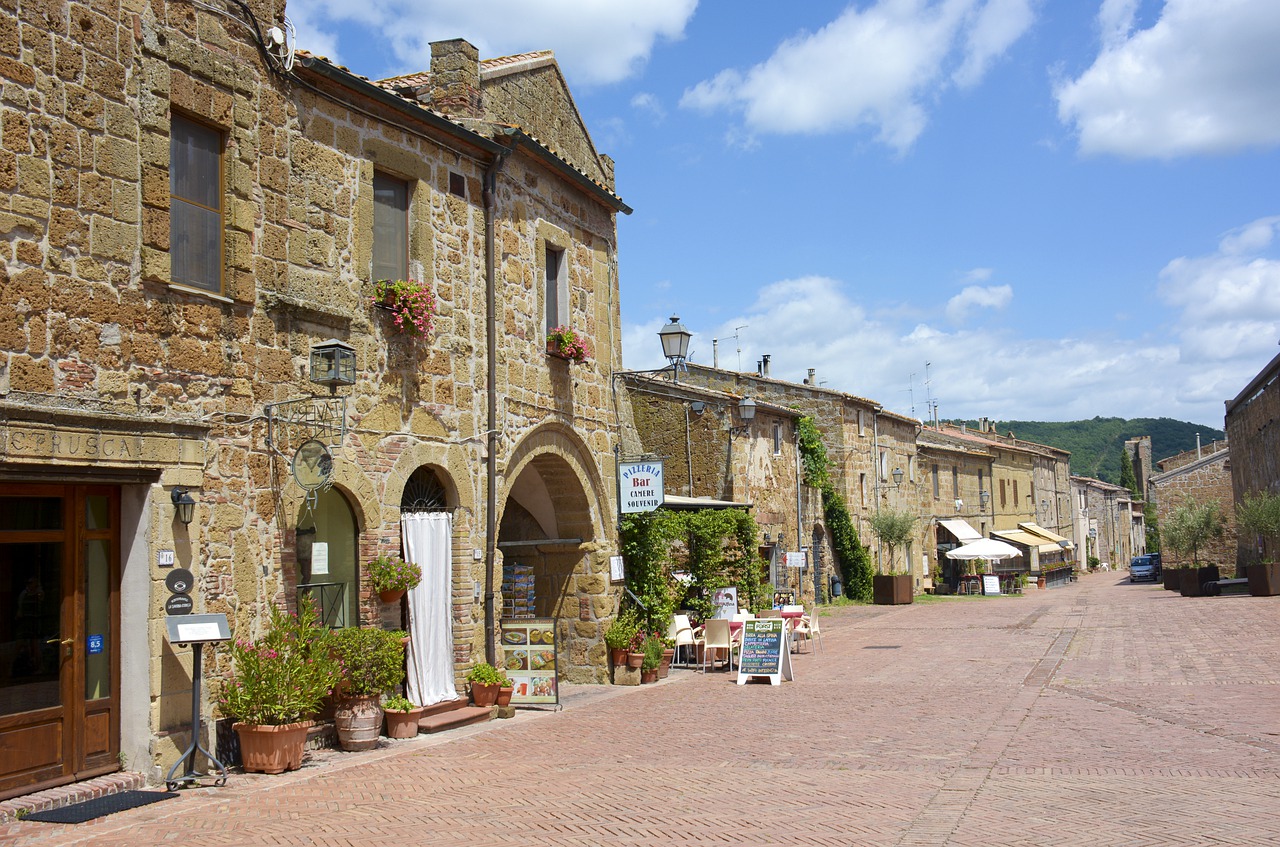Sovana is a small town in southern Tuscany, Italy, a fraction of Sorano, a comune in the province of Grosseto.
Here is a short history of Sovana
Of Etruscan origins, Sovana became a Roman municipium and, from the 5th century, a bishopric. Conquered by the Lombards in 592-605, it was chosen as the administrative center of the area. Later, when Roselle was abandoned due to Saracen devastation, it became the center of the county under the Aldobrandeschi family. In the Middle Ages it was known as Soana.
Its importance declined when the county was acquired by the Orsini family, who moved the capital to Pitigliano. In the mid-16th century Sovana was annexed to the Grand Duchy of Tuscany by Cosimo I de’ Medici.
What to visit in the village of Sovana?
- Rocca Aldobrandesca (Castello Aldobrandeschi), probably built on a pre-existing Etruscan/Roman fortress. Its current appearance dates from its renovation in 1572, when the ramparts were added. Dismantled in the 17th century, today only the portal, a tower and a section of wall remain.
- Palazzo Pretorio (13th-15th century).
- The Romanesque church of Santa Maria Maggiore (church XII-XIII). It houses one of the oldest pre-Romanesque ciboria (the plural of “ciborio”).
- Cathedral of Sovana: built between the 11th and 12th centuries on an ancient building of the 8th century, also in Romanesque style, it has a nave and two naves with columns that bear interesting decorations with biblical scenes. The crypt and richly decorated portal remain from the eighth century. Equally curious is the relief of a two-tailed siren, next to the latter, which bears resemblance to one of the sculpted Etruscan tombs recently discovered in the area. Among others, bishop of Sovana was Antonio Vegni, born in 1686. After a long period in Rome, he was bishop of Sovana and Pitigliano from 1739 to 1746.
- Captain’s log
- The late Renaissance Palazzo Bourbon del Monte, built by Cosimo I de’ Medici.
- The Church of San Mamiliano could be the oldest in the town. In recent years, during archaeological investigations, a hoard of about 500 gold coins from the 5th century AD was found.
- The Etruscan necropolis, archaeological area of Sovana.
Photo by Rudi Maes from Pixabay. The following video is by Claudio Mortini.









Discussion about this post